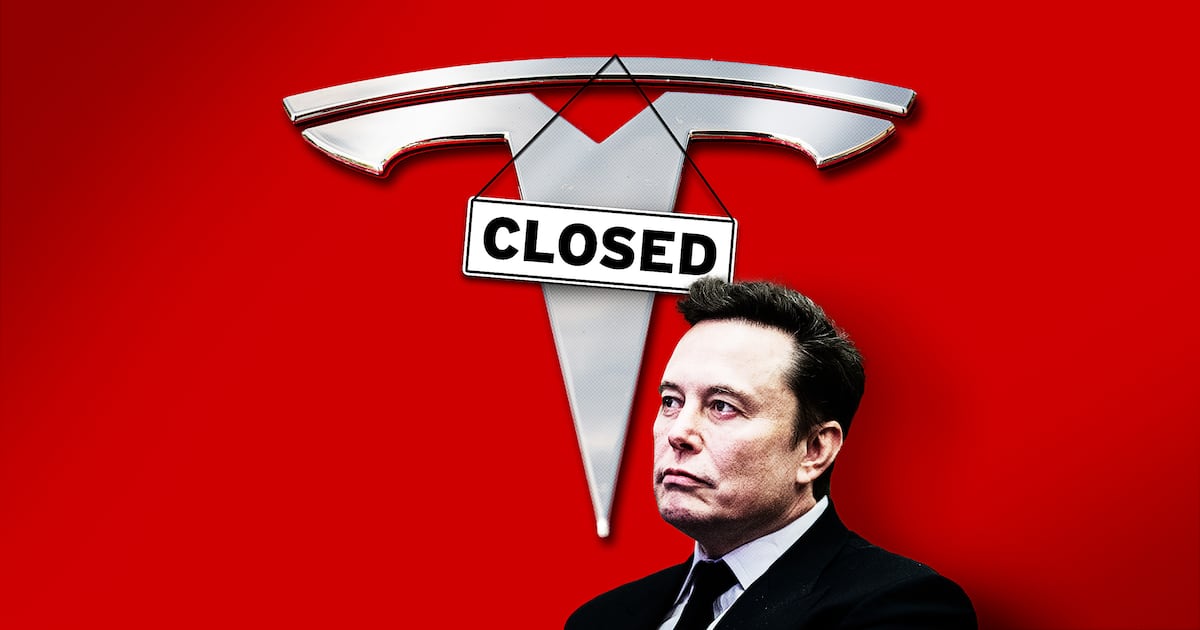A Difficult Woman: The Challenging Life and Times of Lillian HellmanBy Alice Kessler-Harris
Lillian Hellman was a writer whose work has been labelled “middlebrow,” a civil liberties advocate condemned as a “rigid Stalinist,” and a woman who even friends acknowledged could be paranoid and narcissistic. In her new biography, Alice Kessler-Harris insists that Hellman merits reexamination, as the history of her triumphs and disgraces is one which mirrors and illuminates the major events of the 20th century. Kessler-Harris argues that despite Hellman’s substantial misjudgments on Stalinism and the Spanish Civil War, she was in many ways principled. Her flaws were explicable and excusable.
The bulk of Kessler-Harris's book focuses on the competing ideologies which intellectuals in the United States endorsed as solutions to social ills in the years between and after the world wars. Before it became synonymous with totalitarianism, Communism appealed to many of Hellman's contemporaries, from Arthur Miller to Dorothy Parker to Langston Hughes. Kessler-Harris meticulously recreates the atmosphere and opinions of the left-leaning intelligentsia in the late ‘30s. She explores how membership in the American Communist Party was accepted among progressives. Communism was a plausible answer to “the discontents of the poor.”
By the ‘60s, other writers and thinkers were forgiven for their Communist involvement “and honoured to boot,” while Hellman was forever tainted by association. Principally this was due to Hellman's stubbornness. Hellman was loath to entirely betray her previous beliefs, thinking because they were “well-intentioned” they should not be dismissed. Although she apologized for her convictions, critics such as William Buckley felt these were never sincere or comprehensive enough, that she had been “wilfully blind or complicit.” Questions about her ethics were with Hellman until she died, and her posthumous reputation became one of “malevolent and unreasoning thought and behaviour.”
The anger, obstinacy and self-belief which made Hellman unwilling to save her reputation by apologizing were traits which Kessler-Harris suggests stem at least partially from her outsider status as “a daughter of the South, a renegade Jewish woman.” This self-aggrandizing drive also ensured her early success, when she rose from a script-reader at MGM to being a playwright. Hellman was immediately acclaimed on Broadway, and during the initial two-year run of her debut The Children's Hour she was offered the chance to write in Hollywood. Los Angeles was tempting some of the best writers of the period away from the East Coast, including John Dos Passos and F. Scott Fitzgerald, because of what studios could afford to pay. By 1936 Hellman was rewarded an astonishing $2,500 per week in a 10-week contract—a hack screenwriter earned $50.

Hellman became a wealthy, self-sufficient woman, and one whose personal life was a radical departure from tradition, even by the standards of her social circle, as Kessler-Harris notes. “Unlike other women of her generation (Edna St. Vincent Millay, Dorothy Parker, and Mary McCarthy come to mind) she did not atone for her past promiscuity by settling down with a partner. On the contrary, she walked away from an early marriage with no hard feelings and the recognition that marriage was not for her.” Hellman had affairs which became enduring friendships with, among others, detective novelist Dashiell Hammett and Foreign Service officer George Melby.
Joining the Communist Party during Moscow's purge trials and “in full awareness of them” was to detractors the fundamental mark against Hellman's character and legitimacy as a commentator. But what most undermined Hellman's place in the canon came later, from a near-contemporary female author, Mary McCarthy, author of The Group. McCarthy was asked in a 1979 television interview to discuss “overrated” writers, and named Hellman, saying she was “a bad writer, a dishonest writer … she really belongs to the past.” Hellman threatened to sue for slander, which compelled McCarthy to find evidence of inaccuracy in Hellman's three best-selling memoirs. She turned up hundreds of examples by talking to witnesses and checking facts, demonstrating that Hellman had exaggerated and dissembled throughout her autobiographies. However, more damaging than McCarthy's accusation of “selective memory” was the idea of Hellman as mediocre, a minor footnote of 20th century drama, an analysis which has persisted.
Kessler-Harris's tone is consistently even-handed and nonjudgmental; Hellman is never excused for her conduct, for “clinging to a false god,” or her inability to “get her facts straight” but her actions are always painstakingly contextualized. Hellman is placed in the uncertainty of a “war-torn world,” one in which there was no consensus on how to achieve social justice, and where drastic solutions were appealing. Hellman's dishonesty in her later writing is sympathetically framed by the decades of criticism she had endured. She was attempting to reconcile her high ideal for herself with frequently low public opinion, to smooth over the errors in her life by writing them out. Not admirable, but human, and understandable. Hellman's life provides Kessler-Harris with a fascinating, idiosyncratic viewpoint from which to dissect the intellectual currents of the 20th century. Kessler-Harris's previous books have been broad studies of women in the industrial age, and here she demonstrates the historian's skill with scope, but also compellingly threads in the minutiae of one woman's attempts to negotiate the “sharp turns” of U.S. culture and politics.
—Victoria Beale
Birdseye: The Adventures of a Curious ManBy Mark Kurlansky.
The subtitular adjective of Mark Kurlansky’s biography of frozen-foods pioneer Clarence Birdseye could aptly be applied to its author. Best known for his deliciously knowledgeable food histories (Cod, Salt, The Big Oyster), Kurlansky has also written books on baseball, nonviolence, the year 1968, and the Caribbean, not to mention a translation of Emile Zola’s In the Belly of Paris and three novels of his own. His wide-ranging curiosity matches his subject’s, and his narrative of Birdseye’s life displays great feeling for a fellow adventurer, even when Kurlansky is pointing out a zest for slaughtering animals and promoting agribusiness that he clearly does not share. There’s a whiff of defensiveness in the preface, which argues, “it is useful and fascinating to get to know a man of vision and imagination who genuinely believed in industrial answers to life’s problems.” Yet Kurlansky’s affection for Birdseye makes this an agreeable read.
It isn’t so much a biography as a short profile enriched with lively background material on everything from 19th-century medical breakthroughs to the role of refrigeration in urban growth. Thanks to the author’s brisk, conversational prose style, all of this is quite interesting, even if we do sometimes lose track of Birdseye himself. Mind you, it’s easy to lose track of someone who by his mid-20s had already been a commercial hunter (at age 10), a naturalist for the U.S. Biological Survey, a fur trader, a bureaucrat, a field agent researching Rocky Mountain spotted fever, and a fox farmer in the remote northern wilderness of Labrador.
And that’s where Birdseye comes into sharper focus—in Labrador—where he first got seriously interested in food preservation. He needed to assure food supplies during the lengthy winters, first for the foxes he was breeding, and then for his new wife, Eleanor, who intrepidly joined him in the sub-arctic terrain after their marriage in 1915. Native Inuits showed him how a freshly caught fish would freeze instantly in the frigid air; it could then be stored outdoors and thawed as needed. Frozen food had been around for decades by that time, but frozen fish in Labrador tasted fresher and better than the mushy messes available in the United States. Why? The key discovery Birdseye made was that when food was frozen that quickly, the ice crystals formed were smaller; the slow freezing method employed in America created large crystals that damaged the food’s cellular structure and made it highly unappealing when defrosted. In 1922, a few years after Birdseye returned to the States, he began experimenting with ways to reproduce the Inuits’ fast-freezing techniques on an industrial scale.
At this crucial point, Kurlansky backtracks all the way to the Renaissance to give us a cogent history of refrigeration and the use of ice, lucidly explaining and contrasting the scientific, economic, and social attitudes of two continents. In Europe, ice was a luxury for the rich, and refrigeration was a scientific problem; when a Scottish professor of medicine invented the first refrigerator in 1749, he published a scholarly paper about it. When a Maryland engineer half a century later built a metal box for butter surrounded by ice, he patented his device and tried to market it. He didn’t have much luck, but by the time Kurlansky returns to Birdseye in New Jersey, the point had been amply made: Europeans explored ideas, Americans built industries with them.
And that was what Birdseye wanted to do; his interest in fast-freezing was as a means to an end. Getting fish to the consumer in good condition would bring higher prices, sure, but more to the point it could create an entirely new market. “Although he intended to sell frozen fish,” Kurlansky writes, “the real goal of his company was to develop and patent ideas for frozen food.” He moved in 1924 to Gloucester, Massachusetts, to found the General Seafoods Corporation, with the idea that once the company was well established, the name would be changed to General Foods.
Sound familiar? When the Postum Company bought out Birdseye in 1929, it reorganized the new corporation under his proposed name and adopted his goal of making General Foods a major supplier of all things edible. Postum paid $23.5 million for a company and a series of patents as much concerned with packaging and equipment as with freezing techniques. Birdseye walked away with a personal profit of about $1 million and an annual salary of $50,000 to continue his experiments. By the time General Foods retrenched its frozen-food operations in the depths of the Depression, he had developed more than 100 products, having particular success with vegetables. It was only after World War II, with the growth of supermarkets, and with women’s increasing interest in quick, convenient meal preparation, that frozen foods achieved the ubiquity Birdseye had envisioned in the 1920s.
He moved on to designing a light bulb with a built-in reflector and producing paper from sugar cane scrap in Peru. Although Kurlansky outlines with his usual panache these and other exploits before Birdseye’s death in 1956, they’re not as compelling as the central drama of making and marketing frozen food. Nonetheless, most readers will emerge from this breezy book with a fondness for its engagingly eccentric protagonist—and a much better understanding of the intricate interconnection of traditional practices, technical breakthroughs, business deals, and social change that put those frozen peas in our refrigerators.
—Wendy Smith
More Powerful than Dynamite By Thai Jones
In his effort to capture the spirit of the times, Thai Jones seems to have read every column inch of newspapers published in New York City in 1914. His industriousness turned up some beauties, like the Jan. 1 New York Times piece that foretold a year “of obedience to law’s commands, the hooting down of the agitator.”
As Jones demonstrates in his fascinating new book, More Powerful Than Dynamite: Radicals, Plutocrats, Progressives, and New York’s Year of Anarchy, the paper’s prediction was as wrong as wrong gets.
Though global events—namely, World War I—would soon eclipse the local tumult, New York City, in 1914, was a hub of radical politics. The city started the year with a new mayor, 34-year-old John Purroy Mitchel, a reform-minded upstart who swept to victory by a big margin, clobbering the famously corrupt Tammany Hall political machine. For the city’s far-left, however, a group of self-proclaimed anarchists that included Emma Goldman and Alexander Berkman, the ascension of the “Boy Mayor” meant nothing.
Berkman, the editor of Goldman’s strident magazine Mother Earth, sought nothing less than a political reformation—a working-class uprising—and he had spent more than a decade in prison for trying to incite one by shooting Henry Clay Frick, a Carnegie Steel executive, in 1892. “An interrupted revolutionary, he somehow had to regain what he’d lost,” Jones writes. “He needed more than a cause to dedicate himself to; the robber system of capitalism provided an endless litany of causes. He required an enemy, a villain.”
John D. Rockefeller, Jr., would do just fine. Though he had largely withdrawn from the day-to-day workings of his family’s vast business empire, Rockefeller remained a corporate figurehead. In April, 1914, a clash between National Guardsmen and striking workers at the Rockefeller-owned Colorado Fuel & Iron Company resulted in the deaths of about two dozen miners and members of their families. Berkman had found his adversary.
In the spring and summer of 1914, Berkman denounced Rockefeller and other industrialists, as thousands of residents and visitors assembled for a series of protests and public hearings across the city. They were united in their disgust at economic inequalities, corporate rapaciousness, and subhuman working conditions. Regrettably, some of Berkman’s likeminded warriors intended to take things much further. On July 4, an explosion in an East Harlem apartment building killed four, including three men who had accumulated a cache of explosives that they apparently planned to use in an attack on Rockefeller’s Westchester home.
Though Jones is chiefly concerned with the anarchist movement and other political events of 1914, his book is also packed with fascinating asides about various social and cultural goings-on in early 20th-century New York City. With vigor and the authority that comes from exhaustive amounts of research, he writes about movies (patrons flocked to voyeuristic films about the flesh trade while ignoring an early documentary about American battlefield deaths); the contentious history of curfews for city nightclubs and restaurants; and the ups and downs of various public intellectuals, like The Jungle author Upton Sinclair. (“Nor had he helped his own good name with a quest for perfect health that had embraced prolonged fasting, frequent sanitarium stays, and a brief experiment with the ‘monkey and squirrel diet.’”)
A century after protesters took to the streets in and around Manhattan’s Union Square, the Occupy movement began doing the same. There are some parallels between the 1910s and the 2010s, but Jones draws a more apt comparison with March 6, 1970. On that day, three people involved in the antiwar movement died when a bomb they were building for an attack on a nearby Army base brought down a Greenwich Village townhouse. They were members of the Weather Underground, the activist group that used means both legal and otherwise to voice their opposition to the fighting in Vietnam and a host of other issues. (Jones’s parents were also members, and much of this is covered in his 2004 book A Radical Line.)
“Whether it was the Vietnam War or the daily horrors of industrial violence, both the anarchists and the Weathermen had been prepared to kill to combat them,” writes Jones. “And in these two instances—separated by ninety-two blocks and fifty-six years—it was they who died in the attempt.”
—Kevin Canfield







